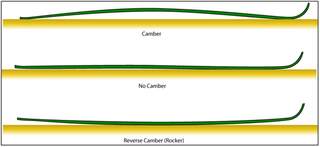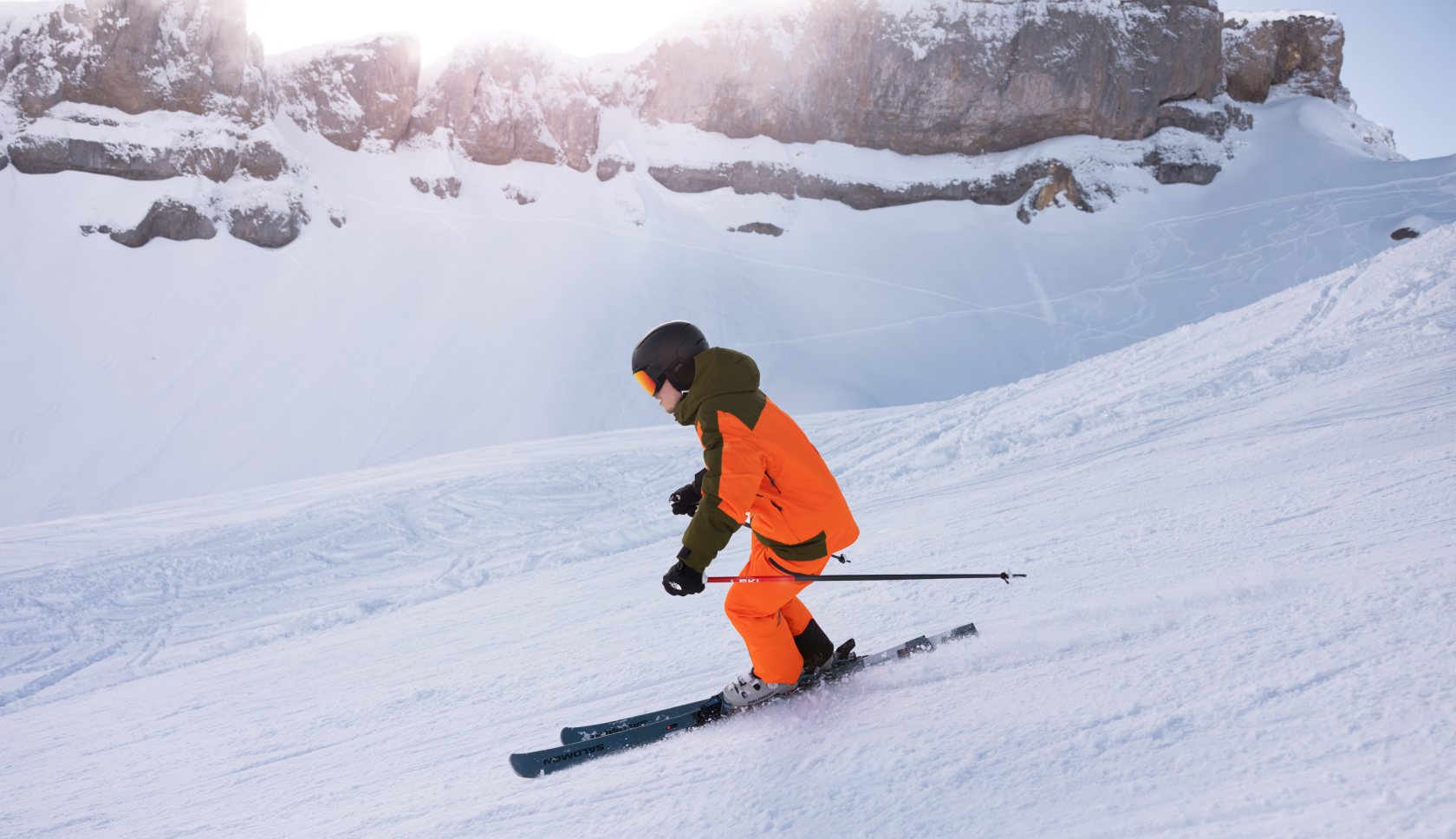Ski technology has seen remarkable advancements over the past decade, reshaping the way skiers of all abilities experience the slopes. From innovative materials to smart sensors and adaptive designs, today’s skis are engineered to enhance performance, comfort, and safety. Whether you’re a seasoned skier or just starting out, understanding the latest developments in ski technology can help you choose the right gear for your style and the conditions you’ll face.
Ski Shapes and Dimensions: The Foundation of Performance
Sidecut: The Curve That Carves Your Turns
At the heart of every ski’s performance is its sidecut—the distinctive hourglass shape when viewed from above. A deeper sidecut means the ski is significantly narrower underfoot than at the tip and tail, which helps the ski carve tight, quick turns. This is especially beneficial in moguls, trees, or when making rapid direction changes. Skis with a shallower sidecut, on the other hand, are more stable at high speeds and are preferred for long, sweeping turns on open pistes. The sidecut is fundamental to a ski’s agility and responsiveness, and modern designs often feature variable sidecuts to suit different skiing styles and conditions.

Waist Width: Your Floatation Anchor
The waist width refers to the narrowest part of the ski, typically located directly beneath your boot. This measurement is crucial because it determines how the ski interacts with the snow. Narrower waists (usually between 65mm and 85mm) provide excellent edge grip and are ideal for groomed runs and icy conditions. Wider waists (95mm and above) offer more surface area, helping you float on top of powder and soft snow. For most British skiers, a waist width between 85mm and 95mm offers the best balance, giving you versatility across a range of conditions, from hard-packed pistes to occasional powder days.
Turn Radius: The Arc of Control
Turn radius is a measurement of the natural arc a ski would make if you continued a turn on a flat surface. It is directly influenced by the ski’s sidecut. Skis with a shorter turn radius (often between 11m and 15m) are highly manoeuvrable and perfect for quick, dynamic turns. Those with a longer turn radius (18m or more) are more stable at high speeds and are better suited for long, sweeping turns. Many all-mountain skis now feature variable radius sidecuts, allowing them to perform well in a variety of situations.
Ski Performance and Handling
Self-Steering: The Ski's Built-In Intelligence
Self-steering is a term used to describe how modern ski designs help initiate and complete turns with minimal effort from the skier. This is achieved through a combination of sidecut, rocker, and flex patterns. When you tip a ski onto its edge, the sidecut and flex work together to naturally guide the ski into an arc, making it easier to carve turns and maintain control. Advanced skis with well-balanced self-steering characteristics feel intuitive and responsive, allowing you to focus on technique rather than forcing the skis into position.
Effective Edge: The Grip Beneath Your Boot
The effective edge is the length of the ski edge that actually makes contact with the snow when you are turning. It is influenced by the ski’s length and the shape of its rocker and camber profiles. A longer effective edge provides more stability and edge grip, especially at high speeds and on hard or icy snow. Conversely, a shorter effective edge makes the ski more manoeuvrable and easier to pivot in tight spaces or soft snow, but can feel less stable in challenging conditions. Finding the right balance of effective edge is essential for matching your skis to your preferred terrain and skiing style.
Rocker Type: Your Snow Adaptation Profile
Rocker refers to the upward curve at the tip and/or tail of the ski, which reduces the amount of edge in contact with the snow and makes the ski easier to turn and float in powder. There are several types of rocker profiles: tip rocker, which improves turn initiation in crud or chopped snow; full rocker, which lifts the entire ski for effortless powder surfing; and hybrid profiles, which combine camber underfoot for power with rocker at the tips and tails for versatility. British skiers often favour hybrid profiles for their adaptability to unpredictable snow conditions.

Ski Flex: The Feel of the Mountain
Flex describes how much the ski bends along its length when pressure is applied. Soft flex skis are more forgiving and easier to turn, making them ideal for beginners, park skiers, and those who enjoy playful, dynamic skiing. Medium flex skis balance responsiveness and forgiveness, suiting intermediate skiers. Stiff flex skis provide more stability and power, making them better suited for aggressive skiers and high-speed carving. The right flex for you depends on your ability level, weight, and the type of skiing you enjoy.
Torsional Stiffness: The Anti-Twist Armour
Torsional stiffness describes how resistant the ski is to twisting along its length. Skis with high torsional stiffness hold their edge better on hard snow and provide more precise control, especially at high speeds or on icy conditions. Skis with lower torsional stiffness are more forgiving and easier to twist, which can be beneficial in soft snow or for skiers who prefer a more relaxed feel. Torsional stiffness is influenced by the materials used in the ski’s construction, such as metal layers or carbon fibre.
Bindings and Mounting
Boot Centre/Mid Sole: The Reference for Perfect Alignment
The boot centre, or mid sole, is the exact point on your ski boot that should align with the binding’s mounting point. This is typically marked on the sole of your boot and is crucial for ensuring that your weight and energy are transferred efficiently to the ski. Correct alignment improves stability, control, and safety, while misalignment can lead to instability or compromised performance. Always check your boot sole length (BSL) and match it to your bindings for optimal results.
Classic/Traditional Mid-Sole Mounting Point
The classic or traditional mid-sole mounting point is usually set 2–4cm behind the ski’s true centre. This position maximises the length of the ski’s tip, which helps with floatation in powder and provides stability at high speeds. Traditional mounts are favoured by all-mountain and big-mountain skiers who prioritise carving and versatility across a range of conditions. This setup is ideal for skiers who enjoy long, sweeping turns and want to feel confident in variable snow.
Progressive/Centre Mounting Point
The progressive or centre mounting point refers to a position that is either at the true centre of the ski or slightly forward. This setup enhances manoeuvrability and makes it easier to pivot the ski, which is especially useful in trees, moguls, or park environments. Progressive mounts strike a balance between carving stability and playful handling, making them a popular choice for freeride skiers who want to blend off-piste exploration with occasional park features. Some skis, especially those designed for park and freestyle, feature a true centre mount for maximum symmetry and spin balance.
Why These Elements Matter Together
Ski performance is the result of how all these technologies interact. A wide-waisted ski with tip rocker and soft flex will float effortlessly in powder but may chatter on ice. A narrow, cambered ski with high torsional stiffness will carve rails on piste but struggle off-trail. The best skis for most skiers are those that balance these features to suit their primary terrain and occasional adventures. As a rule of thumb, match 70% of your ski’s tech to your main skiing environment and 30% to your secondary needs.
The Future: AI and Sustainability in Ski Technology
The ski industry is embracing innovation at every turn, with artificial intelligence (AI) and sustainability now central to its evolution. AI-powered smart skis and accessories are revolutionising the way skiers improve their technique. Devices such as the Carv system use sensors embedded in ski boots or bindings to track performance metrics like edge angle, pressure distribution, and turn shape. These data points are analysed in real time via smartphone apps, offering instant feedback and personalised coaching—helping skiers of all levels refine their skills efficiently.
Beyond personal performance, AI is making ski resorts smarter. Advanced weather forecasting and snow management systems optimise snowmaking, ensuring better conditions while reducing energy and water use. AI-driven automation also streamlines operations, from lift scheduling to energy management, making resorts more efficient and environmentally friendly.
Sustainability is equally important in shaping the future of skiing. Ski manufacturers are increasingly using recycled and eco-friendly materials—such as recycled plastics for ski cores and plant-based resins—to reduce their environmental footprint. Many brands are phasing out harmful chemicals in favour of safer alternatives, and new technologies like eSkin eliminate the need for traditional waxes that can contaminate mountain ecosystems.
As these trends continue, skiers can expect even more personalised, efficient, and environmentally responsible gear and experiences on the slopes. The future of skiing is not just about performance—it’s about enjoying the mountains in a way that’s sustainable for generations to come.
FAQs
Narrow waists (≤85mm) optimise edge grip for icy pistes; wider waists (≥100mm) boost float in soft snow.
14–16m offers manageable responsiveness without overwhelming instability.
Absolutely. Forward mounts enhance manoeuvrability; rearward placements boost stability.
Sharpen every 10 ski days for consistent grip, or after hitting rocks.
A classic mount is set back from the centre for stability and float, while a progressive mount is closer to or at the centre for agility and pivot ease.
- LV (Low Volume): 98mm last, for narrow feet.
- MV (Medium Volume): 100mm last, for average feet.
- HV (High Volume): 102mm last, for wide feet.
GripWalk soles are compatible with most modern bindings, but always check your binding specifications if you have older equipment to ensure proper fit and safety.
Related Articles

Let us know you agree to cookies
We use marketing, analytical and functional cookies as well as similar technologies to give you the best experience. Third parties, including social media platforms, often place tracking cookies on our site to show you personalised adverts outside of our website.
We store your cookie preferences for two years and you can edit your preferences via ‘manage cookies’ or through the cookie policy at the bottom of every page. For more information, please see our cookie policy.






